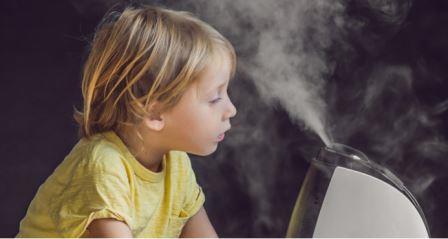Hey there, fellow parents! If you’re anything like me, you want nothing but the best for your little one. One of the unsung heroes in creating a comfortable nursery environment is a good humidifier. These devices can make a world of difference, especially during dry seasons or if your baby has a cold. Let’s dive into the world of humidifiers for babies and explore why they’re so important, how to choose the right one, and how to maintain them effectively.
Why a Humidifier is Essential for Your Baby
Benefits of Humidifiers for Babies
When I first brought my baby home, I quickly realized how dry the air in our home could get, especially during the winter months. A humidifier helps maintain optimal humidity levels in your baby’s room, which can offer several benefits:
- Eases Breathing: Babies have tiny nasal passages, and dry air can make breathing difficult. A humidifier adds moisture to the air, helping to keep those passages clear and making it easier for your baby to breathe.
- Prevents Dry Skin: Newborn skin is delicate and can dry out quickly. The added humidity can help keep your baby’s skin soft and hydrated.
- Reduces Congestion: If your baby catches a cold, the moist air from a humidifier can help reduce congestion, making it easier for them to sleep and feed.
- Improves Sleep: Comfort is key to a good night’s sleep. By maintaining a comfortable humidity level, a humidifier can help your baby sleep more soundly.
My Personal Experience
I remember the first time I used a humidifier for my baby. It was during a particularly cold winter, and the dry air was causing my little one to wake up frequently due to a stuffy nose. After setting up the humidifier, I noticed an immediate improvement in her comfort and sleep quality. It was a game-changer for us.
Choosing the Right Humidifier for Your Baby
Types of Humidifiers
There are several types of humidifiers to choose from, each with its own set of benefits and drawbacks. Here’s a rundown of the most common ones:
- Cool Mist Humidifiers: These are great for adding moisture to the air without the risk of burns, making them safe for nurseries. They come in two varieties: evaporative and ultrasonic.
- Warm Mist Humidifiers: These use a heating element to boil water and release steam. While effective, they can pose a burn risk if placed within reach of a curious baby.
- Ultrasonic Humidifiers: These use high-frequency vibrations to create a fine mist. They are generally quiet and energy-efficient, making them a popular choice for nurseries.
- Evaporative Humidifiers: These use a fan to blow air through a moistened wick filter. They are self-regulating, meaning they only release as much moisture as the air can hold.
Key Features to Look For
When choosing a humidifier for your baby’s room, there are a few key features to consider:
- Noise Level: Babies are sensitive to noise, so look for a humidifier that operates quietly. Ultrasonic models are typically the quietest.
- Ease of Cleaning: Regular cleaning is essential to prevent mold and bacteria growth. Choose a model with removable, easy-to-clean parts.
- Tank Size: A larger tank means fewer refills. Look for a humidifier that can run throughout the night without needing a refill.
- Adjustable Mist Levels: The ability to adjust the mist output allows you to control the humidity level in the room.
- Auto Shut-Off: This feature turns the humidifier off when the water level is low, preventing damage to the unit and ensuring safety.
My Top Picks for Baby Humidifiers
After trying out several models, here are a few humidifiers that stood out to me for their performance and features:
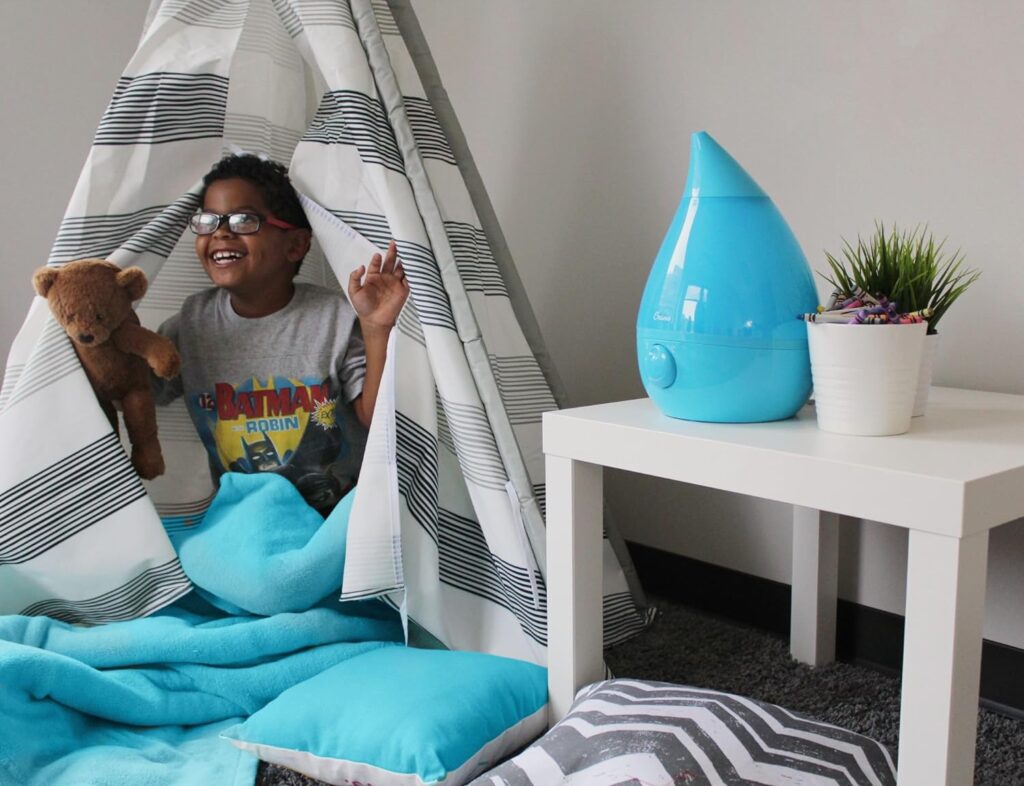
The Crane Drop Ultrasonic Humidifier features an easy-to-clean, detachable tank that holds one gallon of water to humidify bedroom, nursery, or indoor spaces up to 500 square feet for 24 hours.
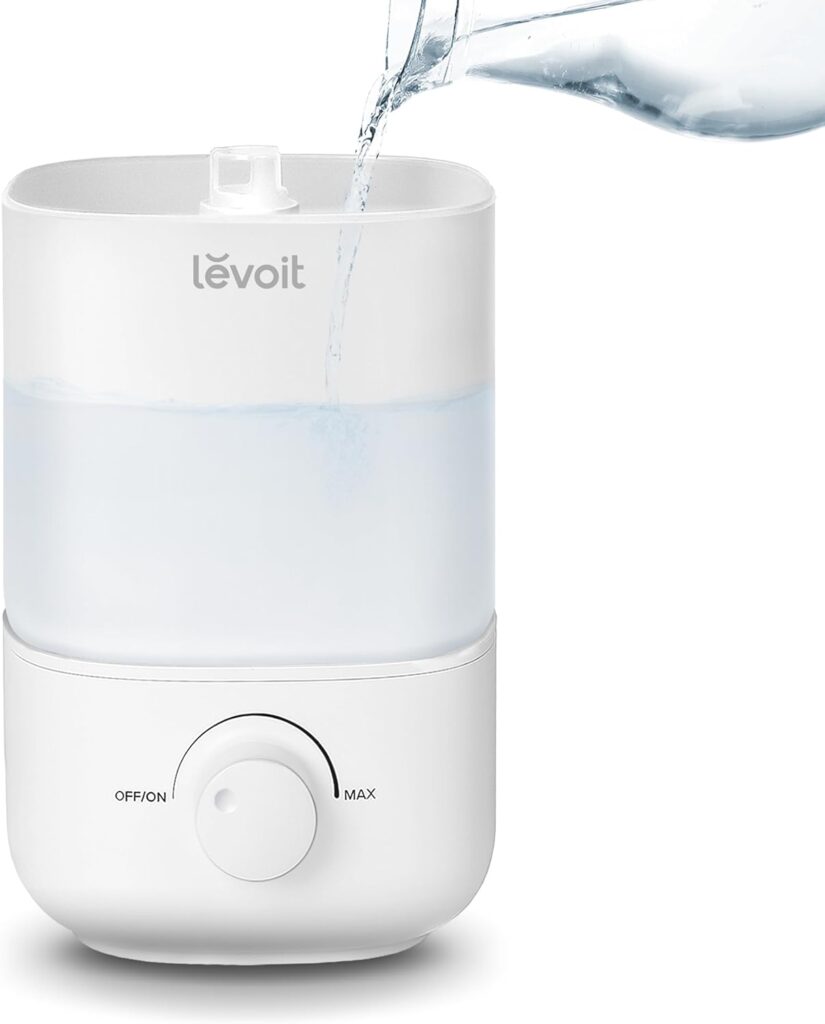
Runs for up to 25 hours on low thanks to its SUPER LARGE capacity of 2.5 liters. The soothing moisture helps quickly relief congestion and dry throat.
Easily clean the inside of the tank through its big opening. The detachable designs and simple construction of the base leave no hard-to-reach corners when cleaning. Maintaining health has never been this easy.
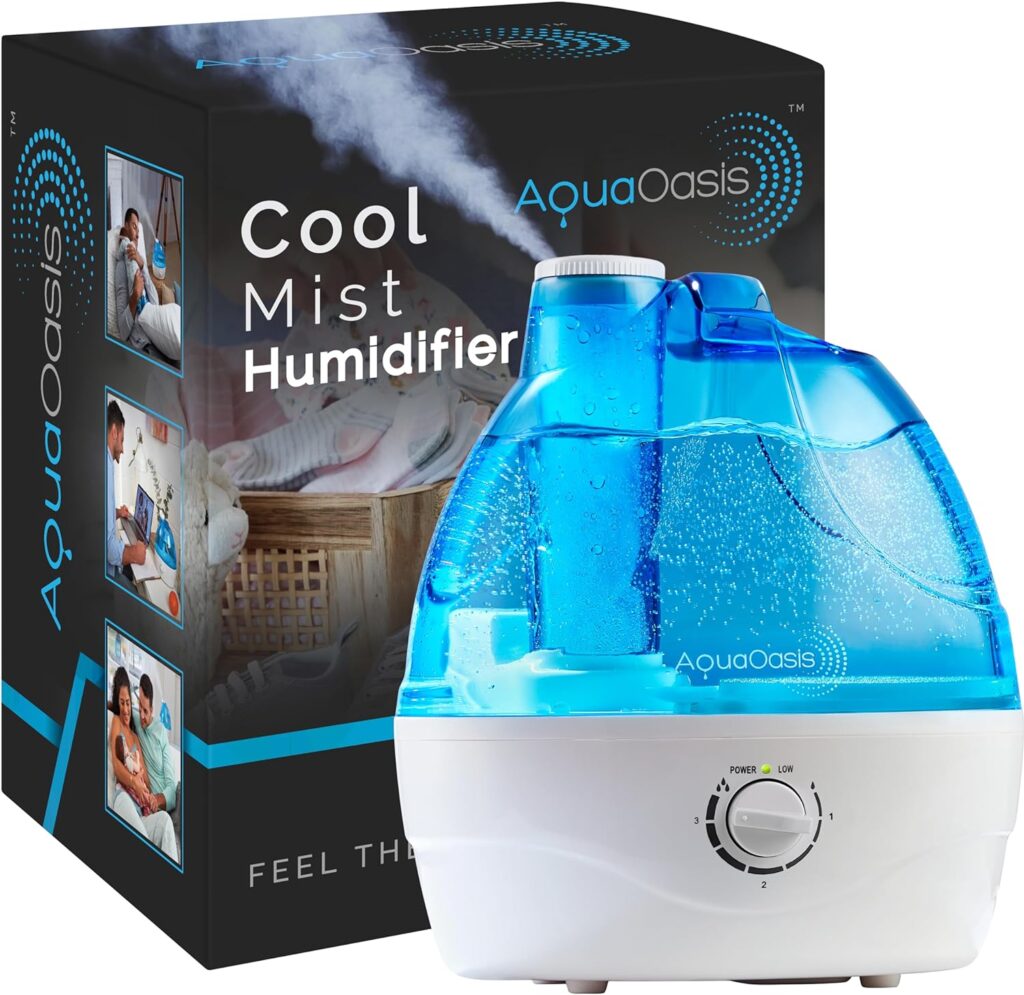
Do you want to eliminate the suffering from the terrible effects of dry air? No need to struggle with cheap flimsy and leaky desk humidifiers. This quality ultrasonic humidifier is the one you’re looking for. It pumps relief immediately and effectively.

Enjoy versatile usage by using the baby humidifier, diffuser, and nightlight together for a comprehensive experience or separately based on your needs, providing flexibility and convenience.
It converts water into a refreshing mist that runs for up to 24 hours. The mist adjuster allows for a customizable experience, with a simple knob twist. The BPA-free water tank ensures safety and purity.
6. Frida Baby Breathefrida Vapor Bath Drops
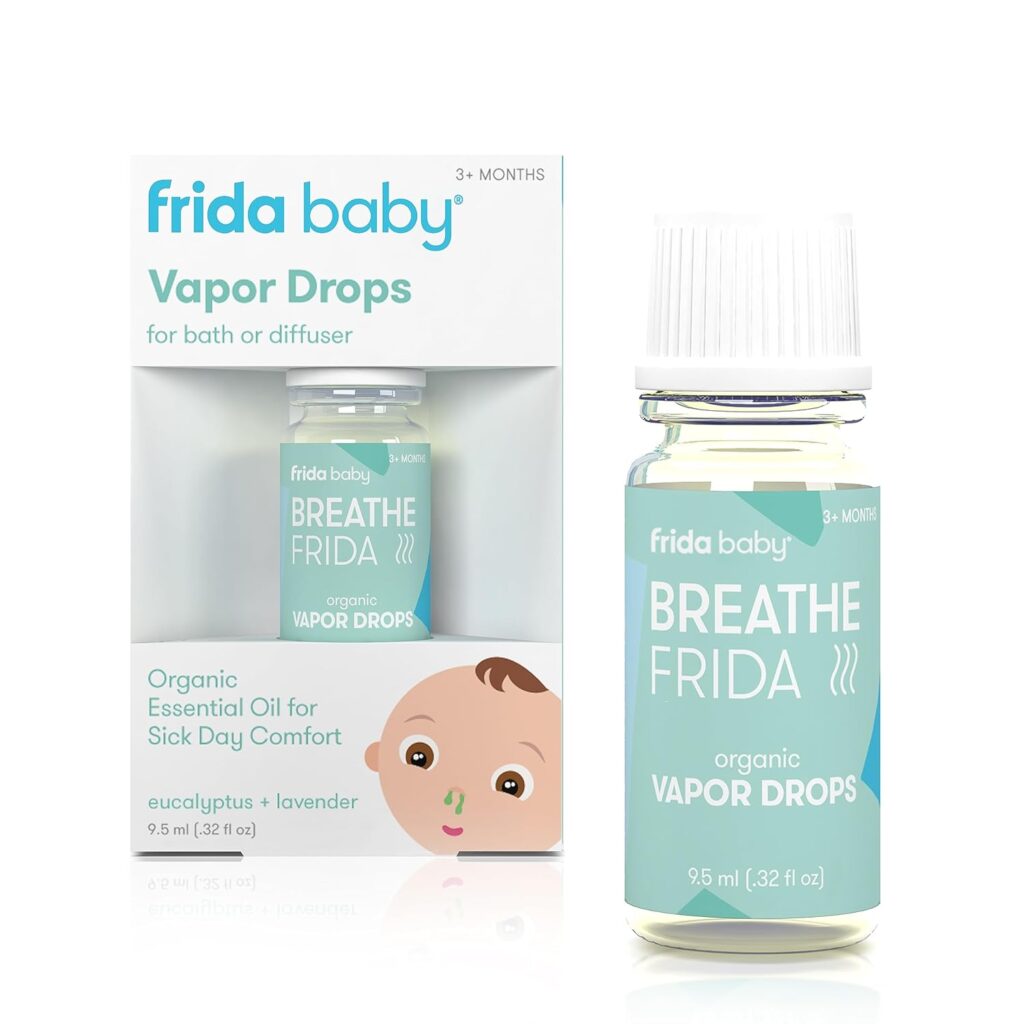
Add soothing eucalyptus drops to bath water or Frida Baby 3-in-1 Humidifier, Diffuser plus Nightlight for sick-day comfort.
Helps baby breathe easily when congested, suitable for ages 3 months and up.
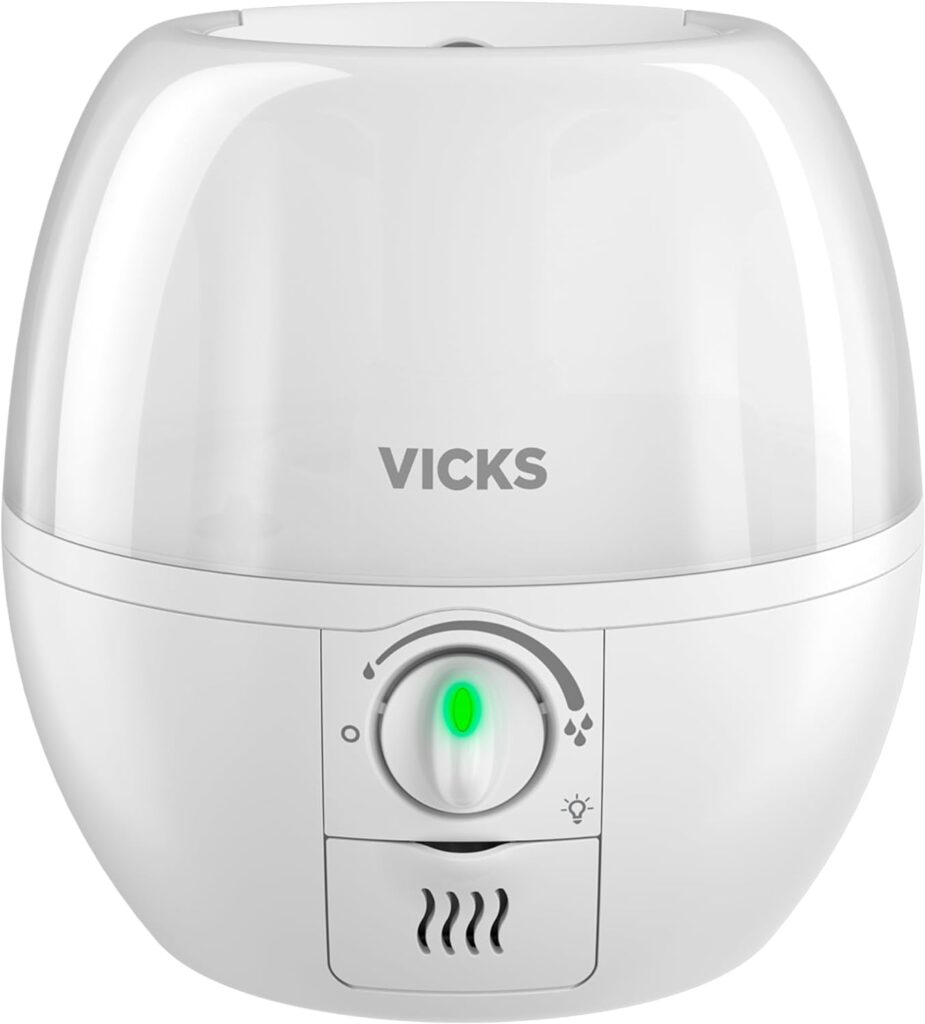
Vicks 3-in-1 SleepyTime Cool Mist Humidifier, Diffuser, and Night Light is an essential part of a good night’s sleep for better breathing and more comfortable sleep for the entire family.
It Creates a personalized, calming environment for your child to rest. Soothe a cough or stuffy nose with the humidifier, provide a calming scent with VaporPads or essential oils, and illuminate the room with the night light.
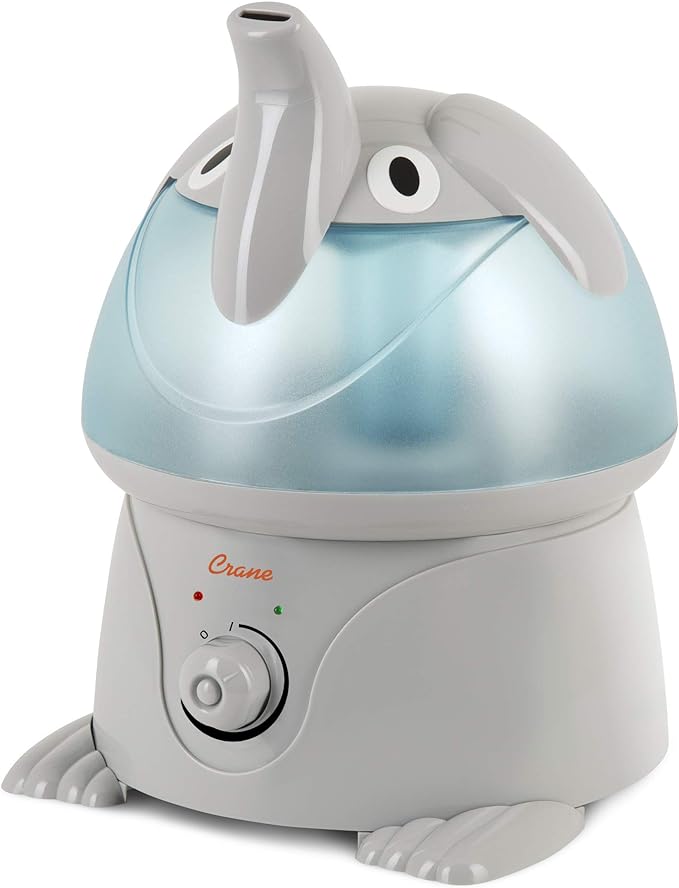
Crane Adorable Ultrasonic Humidifier features an easy-to-clean, detachable bottom fill tank that holds one gallon of water− perfect for humidifying indoor spaces up to 500 square feet for 24 hours.
Optional filter slots and variable controls make it easy to set the best humidity level for your room; Simply adjust as needed for multi-purpose use as a humidifier for plants, a baby humidifier, a bedroom humidifier, or a children’s room humidifier.
Setting Up Your Baby’s Humidifier
Placement Tips
Proper placement of the humidifier is crucial for safety and effectiveness. Here’s what I’ve learned from my experience:
- Keep it Elevated: Place the humidifier on a stable, elevated surface, out of reach of your baby. This ensures the mist disperses evenly throughout the room.
- Avoid Direct Contact: Make sure the mist is not blowing directly onto your baby. Position the humidifier so that the mist can spread evenly in the room.
- Use a Waterproof Mat: To protect your furniture or flooring, place the humidifier on a waterproof mat or tray.
Optimal Humidity Levels
Maintaining the right humidity level is essential. Ideally, you want to keep the room’s humidity between 30% and 50%. Too much humidity can encourage mold growth, while too little can dry out your baby’s nasal passages and skin. I use a hygrometer to monitor the humidity levels and adjust the humidifier settings as needed.
Daily Maintenance Routine
Refilling the Water Tank
Every day, I make it a habit to empty any remaining water from the tank and refill it with fresh, distilled water. This prevents mineral buildup and ensures the mist is clean and healthy.
Checking for Leaks
A quick daily check for leaks can prevent water damage and ensure the humidifier is functioning correctly. If I notice any water around the base, I inspect the tank and seals to make sure everything is secure.
Weekly Maintenance Routine
Deep Cleaning
Once a week, I give the humidifier a thorough cleaning. Here’s my routine:
- Disassemble the Humidifier: Remove the water tank and any other detachable parts.
- Clean with Vinegar: Fill the tank with a mixture of one part white vinegar to one part water. Let it sit for about 30 minutes to dissolve any mineral deposits.
- Scrub and Rinse: Use a soft brush to scrub the tank and any other parts that come into contact with water. Rinse thoroughly with clean water.
- Dry Completely: Allow all parts to air dry completely before reassembling the humidifier.
Filter Replacement
If your humidifier has a filter, check the manufacturer’s recommendations for replacement intervals. I usually replace the filter every month to ensure the unit is working efficiently and the air quality remains high.
Monthly Maintenance Routine
Descaling the Humidifier
Mineral buildup can reduce the efficiency of your humidifier. Monthly descaling helps prevent this:
- Vinegar Soak: Fill the water tank with a solution of equal parts vinegar and water. Let it soak for about 30 minutes.
- Run the Humidifier: Turn on the humidifier and let it run until the tank is half empty. This helps clean the internal components.
- Rinse Thoroughly: Empty the tank and rinse all parts with clean water to remove any vinegar residue.
Inspecting the Humidifier
Regular inspections help catch potential issues early. I check the seals, hoses, and electrical components for any signs of wear or damage. Addressing small problems promptly can prevent bigger issues down the line.
Seasonal Maintenance Routine
Preparing for Storage
When it’s time to put the humidifier away for the season, proper storage is essential:
- Clean Thoroughly: Perform a deep clean and ensure all parts are completely dry.
- Disassemble and Store Safely: Disassemble the humidifier and store it in a cool, dry place. Keep all parts together to avoid losing anything.
- Check Before Use: At the start of the next season, inspect the humidifier thoroughly before use. This ensures it’s clean and in good working condition.
Troubleshooting Common Humidifier Issues
White Dust
If you notice fine white dust settling around the humidifier, it’s likely due to minerals in the water. Switching to distilled water can help reduce this issue. I’ve found that using a demineralization cartridge in the tank also helps.
Reduced Mist Output
A decrease in mist output can be caused by mineral buildup or a clogged filter. Regular cleaning and filter replacement are key to maintaining optimal mist levels. When I encounter this issue, a thorough cleaning usually resolves it.
Unpleasant Odors
If your humidifier emits an unpleasant odor, it’s likely due to bacteria or mold growth. Deep cleaning and using fresh water daily can prevent this. I’ve found that adding a few drops of essential oil with antibacterial properties can also help keep things fresh.
Types of Humidifiers for Babies
Cool Mist Humidifiers
Cool mist humidifiers are safe and effective for nurseries. They disperse cool vapor into the air, which can help soothe dry skin and ease breathing. I prefer ultrasonic cool mist humidifiers for their quiet operation and efficiency.
Warm Mist Humidifiers
While warm mist humidifiers are effective at adding moisture, they can pose a burn risk if placed within reach of a curious baby. If you choose a warm mist humidifier, ensure it’s placed out of reach and follow all safety guidelines.
Ultrasonic Humidifiers
Ultrasonic humidifiers use high-frequency vibrations to create a fine mist. They are generally quiet and energy-efficient, making them a popular nurser choice. I’ve found that they require less frequent maintenance compared to other types.
Evaporative Humidifiers
Evaporative humidifiers use a fan to blow air through a moistened wick filter. They are self-regulating, meaning they only release as much moisture as the air can. This makes them a low-maintenance option, though they can be noisier than ultrasonic models.
Choosing the Best Humidifier for Your Baby’s Room
Consider Room Size
The size of your baby’s room will determine the type and capacity of the humidifier you need. For smaller rooms, a compact ultrasonic humidifier might be sufficient. Larger rooms may require a more powerful evaporative model.
Noise Level
Babies are sensitive to noise, so look for a humidifier that operates quietly. Ultrasonic models are typically the quietest, making them ideal for nurseries.
Ease of Use
Choose a humidifier with user-friendly controls and easy-to-clean parts. Features like adjustable mist levels, auto shut-off, and indicator lights can make operation simpler and more convenient.
Safety Features
Safety is paramount in a nursery. Look for humidifiers with cool mist options, auto shut-off when the tank is empty, and child-proof features to prevent accidental spills or tampering.
My Recommendations
After trying out several models, here are a few humidifiers that stood out to me for their performance and features:
- Crane Drop Ultrasonic Cool Mist Humidifier: This model is quiet, easy to clean, and has an auto shut-off feature. Plus, it comes in fun colors that can match any nursery decor.
- Honeywell HCM-350 Germ-Free Cool Mist Humidifier: Known for its easy maintenance and germ-killing feature, this evaporative model is perfect for keeping your baby’s environment healthy.
- Pure Enrichment MistAire Ultrasonic Cool Mist Humidifier: Compact, quiet, and with a night light feature, this humidifier is ideal for smaller nurseries.
Setting Up Your Baby’s Humidifier
Placement Tips
Proper placement of the humidifier is crucial for safety and effectiveness. Here’s what I’ve learned from my experience:
- Keep it Elevated: Place the humidifier on a stable, elevated surface, out of reach of your baby. This ensures the mist disperses evenly throughout the room.
- Avoid Direct Contact: Make sure the mist is not blowing directly onto your baby. Position the humidifier so that the mist can spread evenly in the room.
- Use a Waterproof Mat: To protect your furniture or flooring, place the humidifier on a waterproof mat or tray.
Optimal Humidity Levels
Maintaining the right humidity level is essential. Ideally, you want to keep the room’s humidity between 30% and 50%. Too much humidity can encourage mold growth, while too little can dry out your baby’s nasal passages and skin. I use a hygrometer to monitor the humidity levels and adjust the humidifier settings as needed.
Daily Maintenance Routine
Refilling the Water Tank
Every day, I make it a habit to empty any remaining water from the tank and refill it with fresh, distilled water. This prevents mineral buildup and ensures the mist is clean and healthy.
Checking for Leaks
A quick daily check for leaks can prevent water damage and ensure the humidifier is functioning correctly. If I notice any water around the base, I inspect the tank and seals to make sure everything is secure.
Weekly Maintenance Routine
Deep Cleaning
Once a week, I give the humidifier a thorough cleaning. Here’s my routine:
- Disassemble the Humidifier: Remove the water tank and any other detachable parts.
- Clean with Vinegar: Fill the tank with a mixture of one part white vinegar to one part water. Let it sit for about 30 minutes to dissolve any mineral deposits.
- Scrub and Rinse: Use a soft brush to scrub the tank and any other parts that come into contact with water. Rinse thoroughly with clean water.
- Dry Completely: Allow all parts to air dry completely before reassembling the humidifier.
Filter Replacement
If your humidifier has a filter, check the manufacturer’s recommendations for replacement intervals. I usually replace the filter every month to ensure the unit is working efficiently and the air quality remains high.
Monthly Maintenance Routine
Descaling the Humidifier
Mineral buildup can reduce the efficiency of your humidifier. Monthly descaling helps prevent this:
- Vinegar Soak: Fill the water tank with a solution of equal parts vinegar and water. Let it soak for about 30 minutes.
- Run the Humidifier: Turn on the humidifier and let it run until the tank is half empty. This helps clean the internal components.
- Rinse Thoroughly: Empty the tank and rinse all parts with clean water to remove any vinegar residue.
Inspecting the Humidifier
Regular inspections help catch potential issues early. I check the seals, hoses, and electrical components for any signs of wear or damage. Addressing small problems promptly can prevent bigger issues down the line.
Seasonal Maintenance Routine
Preparing for Storage
When it’s time to put the humidifier away for the season, proper storage is essential:
- Clean Thoroughly: Perform a deep clean and ensure all parts are completely dry.
- Disassemble and Store Safely: Disassemble the humidifier and store it in a cool, dry place. Keep all parts together to avoid losing anything.
- Check Before Use: At the start of the next season, inspect the humidifier thoroughly before use. This ensures it’s clean and in good working condition.
Troubleshooting Common Humidifier Issues
White Dust
If you notice fine white dust settling around the humidifier, it’s likely due to minerals in the water. Switching to distilled water can help reduce this issue. I’ve found that using a demineralization cartridge in the tank also helps.
Reduced Mist Output
A decrease in mist output can be caused by mineral buildup or a clogged filter. Regular cleaning and filter replacement are key to maintaining optimal mist levels. When I encounter this issue, a thorough cleaning usually resolves it.
Unpleasant Odors
If your humidifier emits an unpleasant odor, it’s likely due to bacteria or mold growth. Deep cleaning and using fresh water daily can prevent this. I’ve found that adding a few drops of essential oil with antibacterial properties can also help keep things fresh.
Personal Experiences and Tips
Finding a Routine
It took me some time to find a maintenance routine that worked, but once I did, it became second nature. I recommend starting with daily tasks and gradually adding weekly and monthly routines until they become habits.
Troubleshooting on the Go
Whenever I encounter issues, I consult the humidifier’s manual or search online for solutions. There’s a wealth of information available, and most problems have simple fixes.
Sharing Knowledge
I’ve shared my maintenance tips with friends and family, and they’ve found them helpful too. Maintaining a humidifier doesn’t have to be daunting—once you know what to do, it’s easy and rewarding.
Conclusion
Maintaining your humidifier is crucial for ensuring it runs efficiently and provides the health benefits you’re looking for. By following a regular cleaning and maintenance routine, you can extend the life of your device and keep your indoor air healthy and comfortable. I hope this guide has provided you with valuable insights and practical tips. Remember, a little effort goes a long way in keeping your humidifier in top condition. Happy humidifying!
Related Articles.

SAMMY MWANGI the editor of Autohomegadgets.com. He is an Electronics Technician enthusiast and a Sales Manager in one of the leading ICT companies in Africa. When he is not working, he loves to travel and explore nature. He is a Robot fanatic too.


